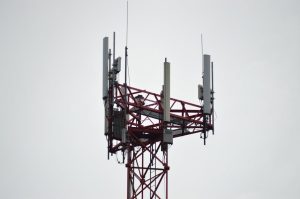Starlink: The Revolutionary Satellite Constellation Changing the Face of Global Connectivity – Starlink

Starlink: The Revolutionary Satellite Constellation Changing the Face of Global Connectivity – Starlink
Focus Keyword: Starlink. Starlink is a satellite constellation developed by SpaceX, a private aerospace manufacturer and space transport services company founded by Elon Musk. The project aims to provide high-speed, low-latency broadband internet to the world, bridging the digital divide and connecting underserved communities. With its cutting-edge technology and vast coverage, Starlink is set to revolutionize the way we access the internet.
The idea of a satellite constellation was first proposed by SpaceX in 2015, with the goal of creating a network of low-Earth orbit (LEO) satellites that could provide global internet coverage. The project has been in development since then, with the first batch of satellites launched in 2019. As of now, Starlink has launched over 3,000 satellites into orbit, with plans to launch many more in the coming years.
How Starlink Works
Starlink uses a constellation of small satellites, each weighing around 260 kilograms, to provide internet connectivity. These satellites are equipped with advanced technology, including Hall effect thrusters, which allow them to maneuver and maintain their position in orbit. The satellites are also equipped with phased array antennas, which enable them to communicate with each other and with ground stations.
The Starlink system works by having the satellites communicate with each other and with ground stations, creating a network of interconnected nodes. When a user sends data through the Starlink network, the signal is transmitted to the nearest satellite, which then relays it to the next satellite, and so on, until the signal reaches its final destination. This process allows for fast and reliable data transfer, with latency as low as 20 milliseconds.
Benefits of Starlink
Starlink has the potential to bring numerous benefits to individuals and communities around the world. One of the most significant advantages is its ability to provide internet access to underserved and remote areas, where traditional connectivity options are limited or non-existent. This can help bridge the digital divide, enabling people to access information, education, and economic opportunities that were previously out of reach.
Starlink also has the potential to provide backup connectivity during natural disasters or network outages. In the event of a disaster, Starlink satellites can provide a reliable means of communication, enabling emergency responders to coordinate their efforts and providing critical information to affected communities.
Challenges and Controversies
Despite its potential benefits, Starlink has faced several challenges and controversies. One of the main concerns is the impact of the satellite constellation on the environment and astronomy. The sheer number of satellites in the Starlink constellation has raised concerns about space debris and the potential for collisions with other spacecraft. Additionally, the satellites’ bright appearance in the night sky has sparked concerns among astronomers, who worry that the satellites will interfere with their ability to observe the universe.
Another challenge facing Starlink is the issue of regulatory approval. The project has faced regulatory hurdles in several countries, with some governments expressing concerns about the potential impact of the satellite constellation on national security and the environment. SpaceX has been working to address these concerns and obtain the necessary approvals to operate the Starlink system.
Conclusion
In conclusion, Starlink is a revolutionary satellite constellation that has the potential to change the face of global connectivity. With its cutting-edge technology and vast coverage, Starlink can provide high-speed, low-latency broadband internet to the world, bridging the digital divide and connecting underserved communities. While the project has faced challenges and controversies, it has the potential to bring numerous benefits to individuals and communities around the world.




